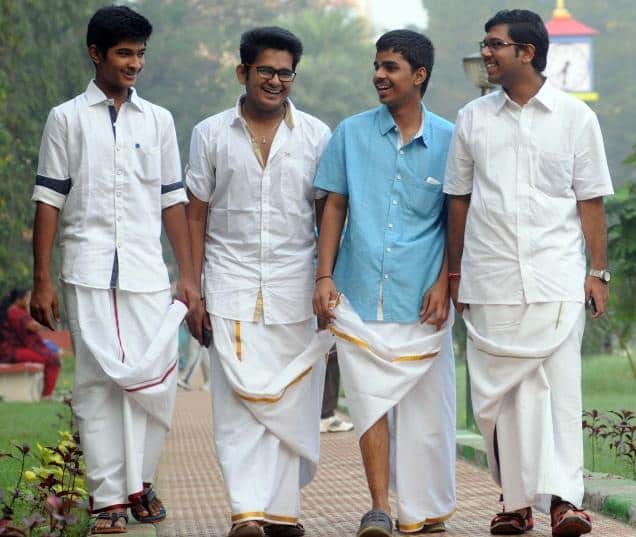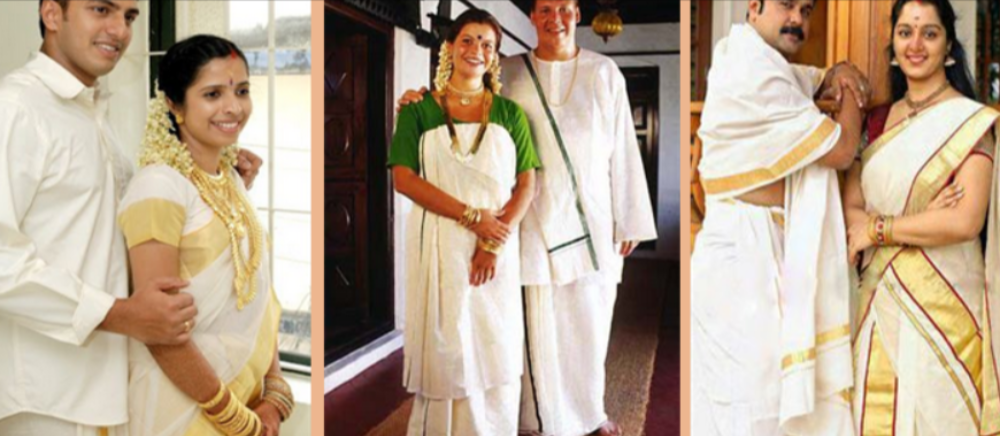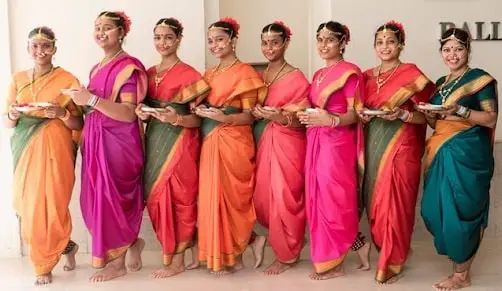Kerala, often referred to as “God’s Own Country,” is renowned for its lush green landscapes, vibrant culture, and the warmth of its people. The unique blend of nature and tradition contributes significantly to the state’s appeal, drawing visitors from far and wide. One of the first things that captivate newcomers is the traditional dress of Kerala, worn proudly by its residents. This article delves into the traditional attire of Kerala, showcasing the garments that define the cultural identity of both men and women in this beautiful state.
Traditional Dress for Men in Kerala

Mundu
At the forefront of men’s traditional clothing in Kerala is the Mundu. This long piece of cloth, typically white or cream, is wrapped around the waist and falls down to the ankles. The Mundu symbolizes purity and is deeply rooted in Kerala’s cultural heritage. It features a decorative border known as the ‘Kara,’ often in golden hues, although other colors may be used for special occasions. When paired with a Melmundu (a traditional shirt), the Mundu creates an elegant look suitable for formal settings.
Worn loosely around the waist, the Mundu can be easily folded to just below the knees, providing comfort and ease of movement. This adaptability makes it a popular choice among men, particularly in Kerala’s warm and humid climate, where practicality is essential.
Jubba
Another significant garment in men’s traditional wear is the Jubba, a long shirt typically crafted from silk. This elegant top often features intricate designs and may come with a Kara, embellished with colorful stones or patterns. The Jubba is predominantly worn during important events, such as weddings or religious ceremonies, highlighting the rich textile traditions of Kerala. Its luxurious appearance adds a touch of sophistication to men’s attire during festive occasions.
Traditional Dress for Women in Kerala

Mundum-Neriyathum
For women, the Mundum-Neriyathum stands out as a quintessential traditional outfit. This stunning two-piece ensemble resembles a saree, consisting of the Neriyathum (the upper piece) and a lower cloth, reminiscent of the saree drape. Typically white or cream with golden borders, the Mundum-Neriyathum reflects simplicity and elegance, complementing men’s traditional attire seamlessly.
The Mundum-Neriyathum is not only an everyday garment but also an essential part of celebrations in Kerala, such as festivals and weddings. Depending on the occasion, the material may vary—cotton for daily wear and silk for festive events, showcasing intricate designs and a more luxurious appearance.
Kerala Saree (Set Mundu)
Another important traditional outfit for women is the Kerala Saree, commonly known as Set Mundu. While it closely resembles the Mundum-Neriyathum, it is draped differently to achieve the classic saree look. The Kerala Saree is particularly favored during major festivals like Onam and Vishu, as well as wedding celebrations, embodying the elegance and cultural pride of the state.
Accessories and Jewelry
Accessories play a vital role in completing the traditional look in Kerala. Temple jewelry, featuring gold necklaces and earrings adorned with motifs of deities and nature, is particularly popular among women. These ornate pieces elevate the beauty of traditional attire, especially during festive occasions. For men, the Melmundu, a gold-bordered towel worn over the shoulder, adds a touch of sophistication, especially during formal gatherings.
Conclusion
In conclusion, the traditional dress of Kerala reflects the state’s rich cultural heritage and vibrant traditions. Whether it’s the Mundu and Jubba for men or the Mundum-Neriyathum and Kerala Saree for women, each garment tells a story of identity and pride. To truly immerse oneself in the essence of Kerala, one must experience the beauty of these traditional dresses, understanding why the locals cherish and wear them daily. Embracing the traditional attire allows visitors to connect more deeply with the culture and spirit of this enchanting state.



